Resource Center
The Transit Workforce Center is pleased to host a curated collection of publications and other materials to assist stakeholders engaged in transit workforce development. The Resource Center includes case studies, training materials, research reports, and other materials of interest, including publications produced by federal government agencies, transit organizations, and independent research entities. Resources may be filtered by topic, resource type, and transit mode. This TWC blog post explains how to use the Resource Center.
We are continuing to update the Resource Center regularly. Please contact us via the Request Help menu option if you would like assistance using the Resource Center or are looking for resources on a particular topic. We also welcome suggestions of topics or specific resources to add.
Content in external resources linked from the Resource Center is solely the responsibility of the resource authors and does not necessarily reflect the perspectives of or endorsement by the Transit Workforce Center.
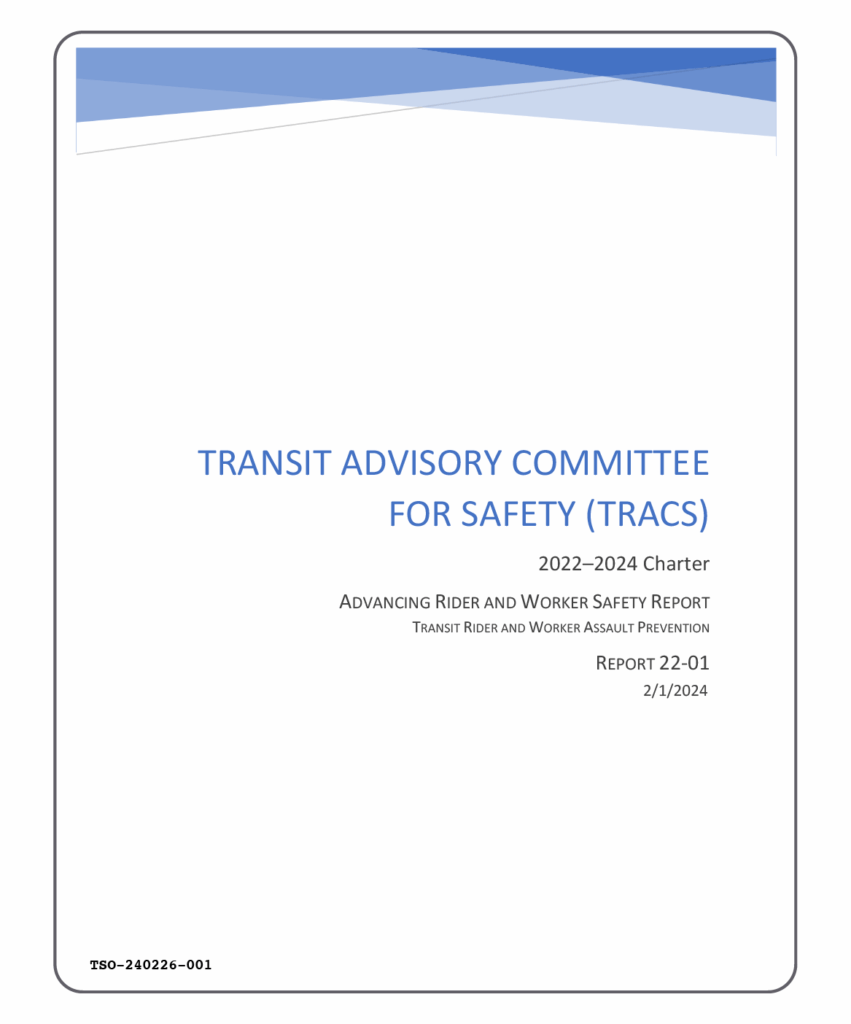
Advancing Rider and Worker Safety
The 2022-2024 Charter tasked the Transit Advisory Committee for Safety (TRACS) with developing recommendations that the Federal Transit Administration could implement to improve public safety. This report includes recommendations related to one of the Charter’s safety focus areas: Advancing Rider and Worker Safety.
Transit Advisory Committee for Safety
February 2024
TOPICS: Policy and Planning, Safety and Health, Training
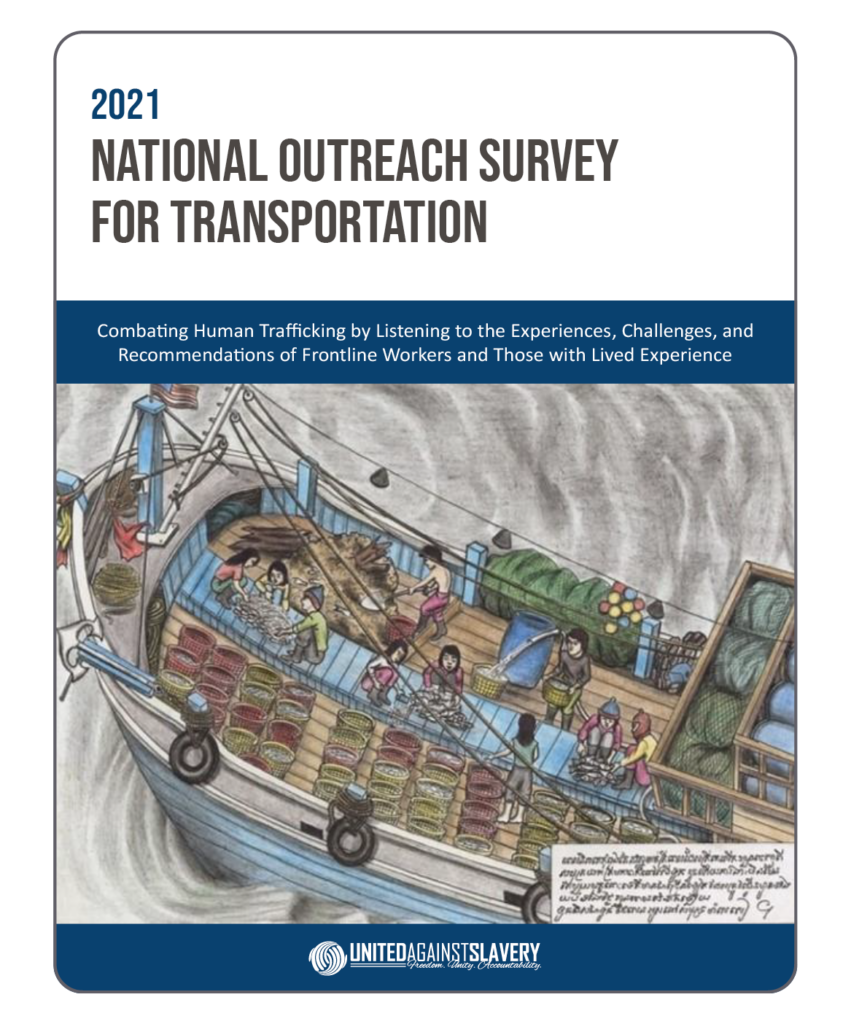
National Outreach Survey for Transportation (NOST)
This report explores the status of sex and labor trafficking in the transportation industry. It explains and highlights a survey of frontline data collected from across the transportation industry, as well as from sex and labor trafficking survivors and direct victim service providers. Data analysis includes information about the current knowledge base on sex trafficking among frontline transportation workers and suggestions for training.
United Against Slavery
January 2024
TOPICS: Policy and Planning, Safety and Health, Training
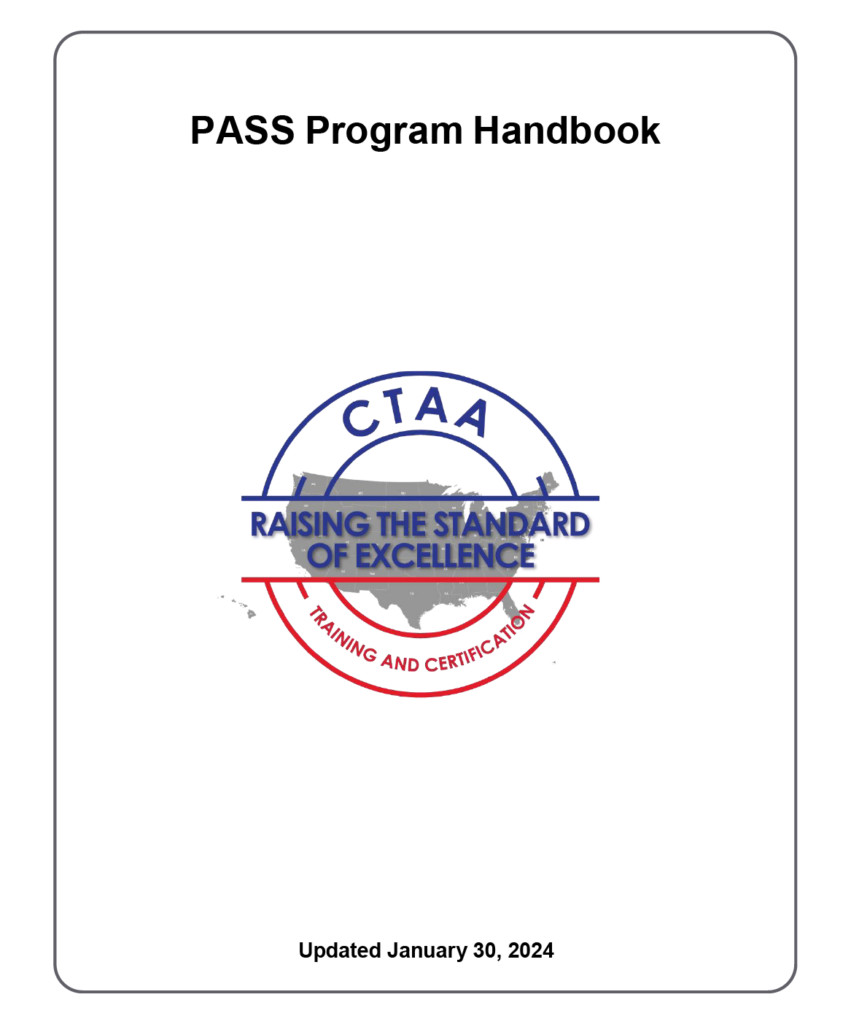
Passenger Assistance, Safety And Sensitivity (PASS) Program Handbook
CTAA’s Passenger Assistance, Safety and Sensitivity (PASS) driver training program provides resources and standards for operators to transport passengers in the most safe, sensitive and careful manner possible. PASS is ideal for non-emergency medical transportation (NEMT) trips, for ADA paratransit services, for specialized transit for older passengers, for human and social service riders — really any transportation operation where the passengers require extra care.
Community Transportation Association of America
January 2024
TOPICS: Community Engagement, Safety and Health, Training
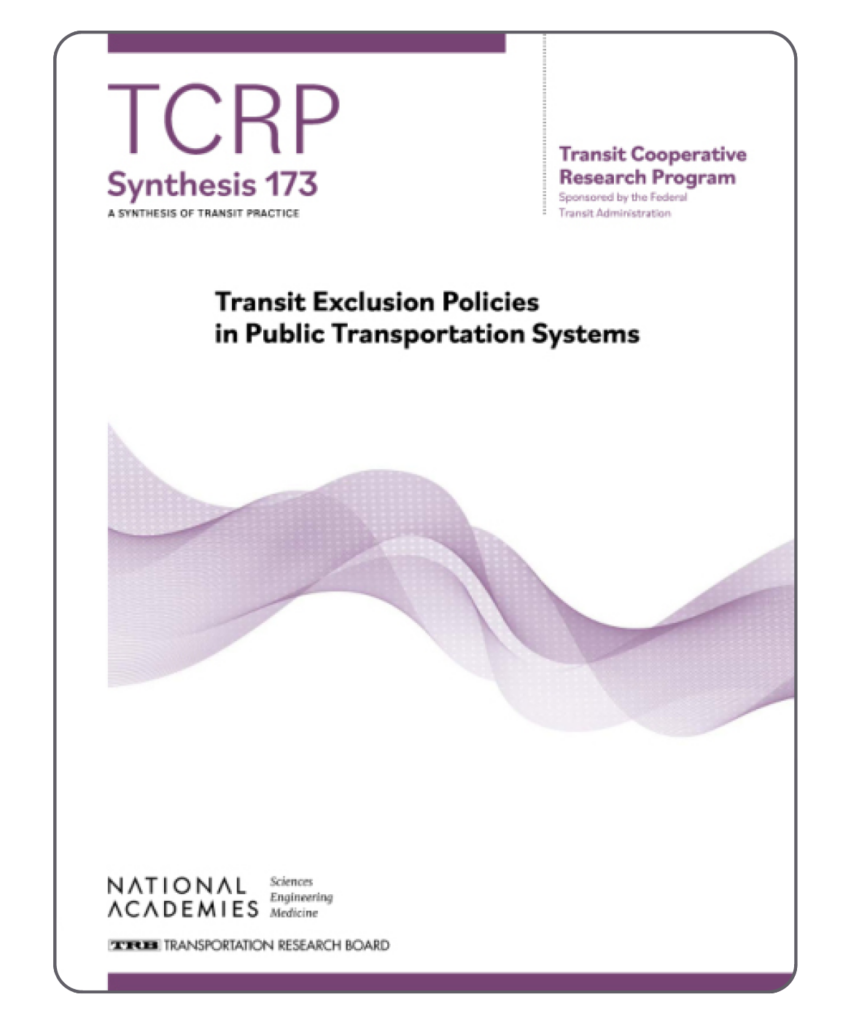
Transit Exclusion Policies in Public Transportation Systems
This report documents the practice of the use of transportation exclusion policies in North American transit systems. It is designed to help transit agencies in understanding the usefulness of such policies, as well as understanding the methods for creating, amending, or supplementing exclusion policies to maximize their effectiveness in reducing crime and disorder within their respective transit systems.
Transit Cooperative Research Program
January 2024
TOPICS: Policy and Planning, Safety and Health, Training
Contributor(s): National Academies of Sciences, Engineering, and Medicine; Transportation Research Board; Transit Cooperative Research Program; Patricia Bye; Deborah Matherly
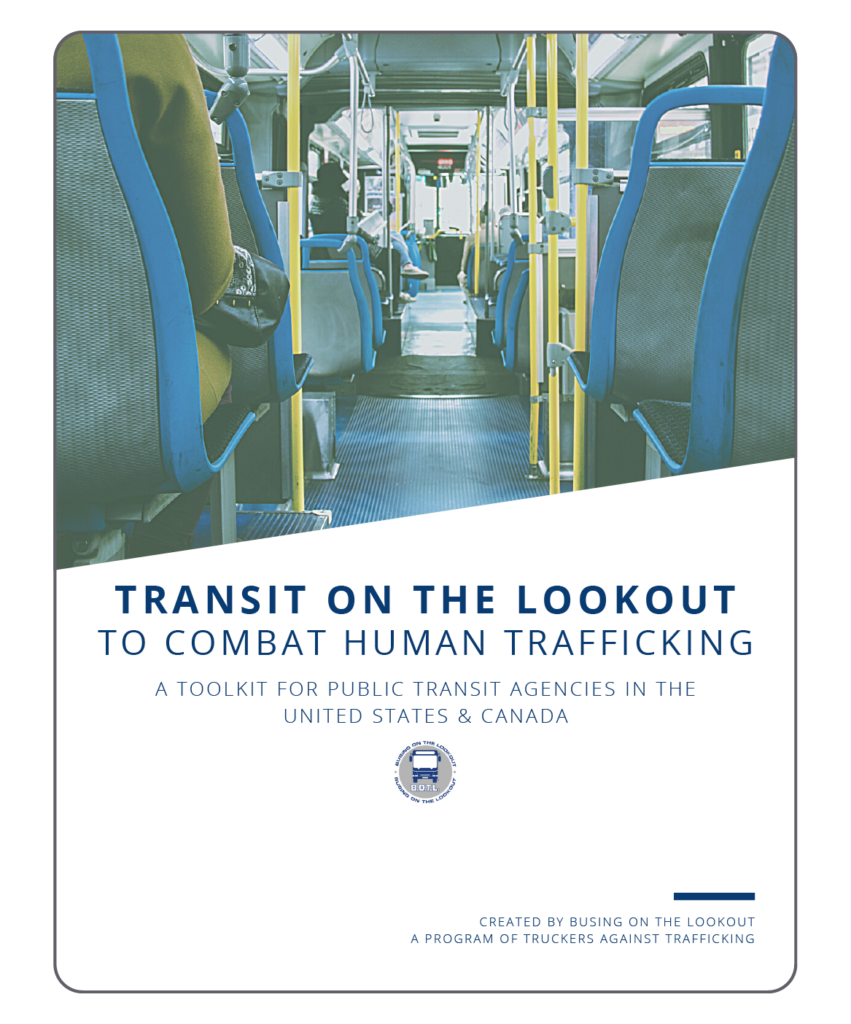
Human Trafficking: Awareness to Action
This webinar reviews the anti-trafficking resources available to transit agencies, shares success stories from the transit industry, and highlights a newly developed template for implementing human trafficking response protocols, which are vital to effective anti-trafficking initiatives. The accompanying toolkit guides transit agencies on steps they can take to help combat human trafficking, including how they can partner with Busing on the Lookout (BOTL) to implement anti-human trafficking training and policies in their operations.
Presenters:
- Jodi Godrey, Center For Urban Transportation Research
- Lexi Higgins, Busing on the Lookout (BOTL) at Truckers Against Trafficking
American Public Transportation Association
January 2024
TOPICS: Safety and Health
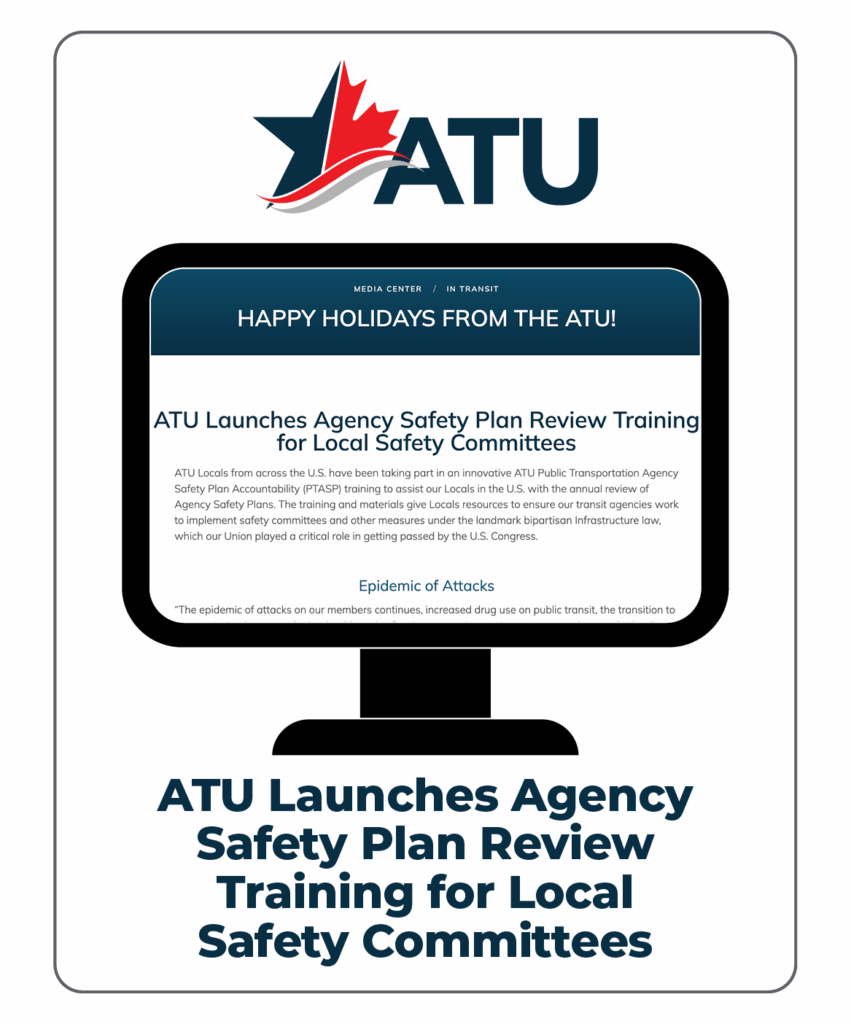
ATU Launches Agency Safety Plan Review Training for Local Safety Committees
ATU Locals from across the U.S. have been taking part in an innovative ATU Public Transportation Agency Safety Plan Accountability (PTASP) training. The training and materials give locals resources to ensure transit agencies work to implement safety committees and other measures under the bipartisan Infrastructure law.
ATU International
December 2023
LEARN MORE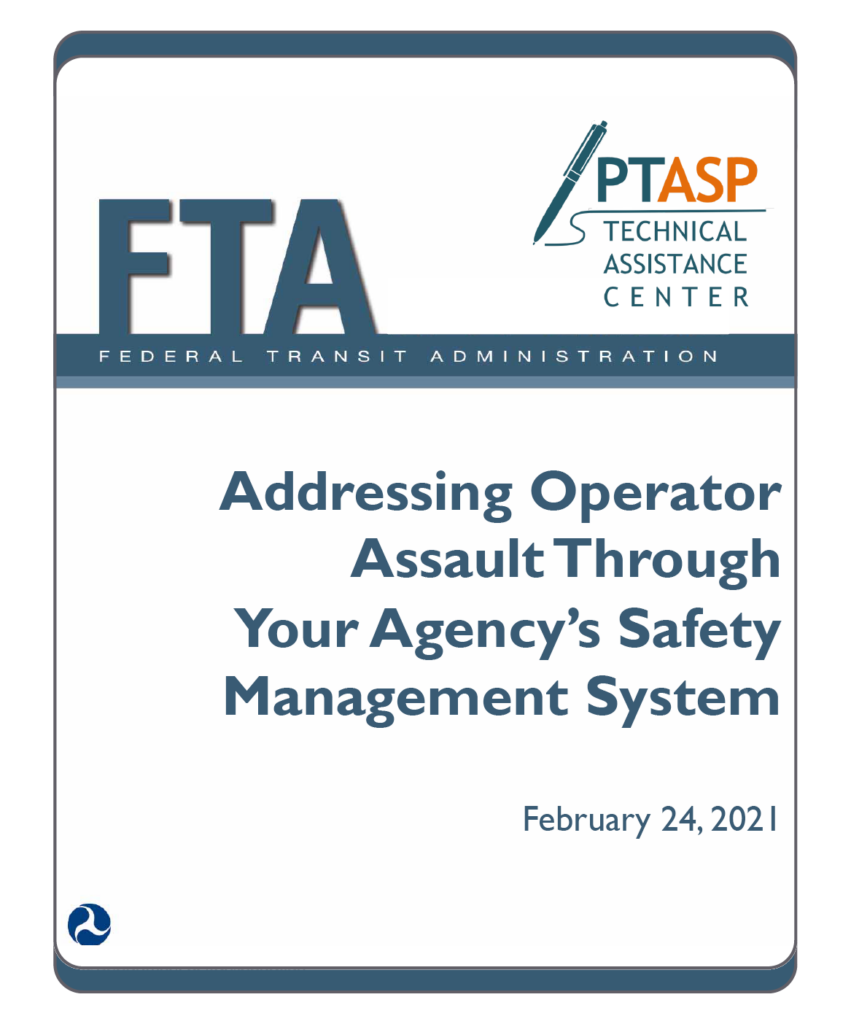
Using Your Safety Management System (SMS) to Protect Transit Workers from Assaults
FTA is working with transit agencies to address the ongoing risk of assaults on transit workers using Safety Management System principles and methods, which FTA adopted as the basis of its Public Transportation Safety Program and Public Transportation Agency Safety Plans (PTASP) regulation.
FTA has developed technical assistance resources to help transit agencies conduct safety risk assessments related to assaults on transit workers and develop safety risk mitigations.
Check out FTA’s full page of crime prevention assistance resources.
Federal Transit Administration
December 2023
TOPICS: Policy and Planning, Safety and Health
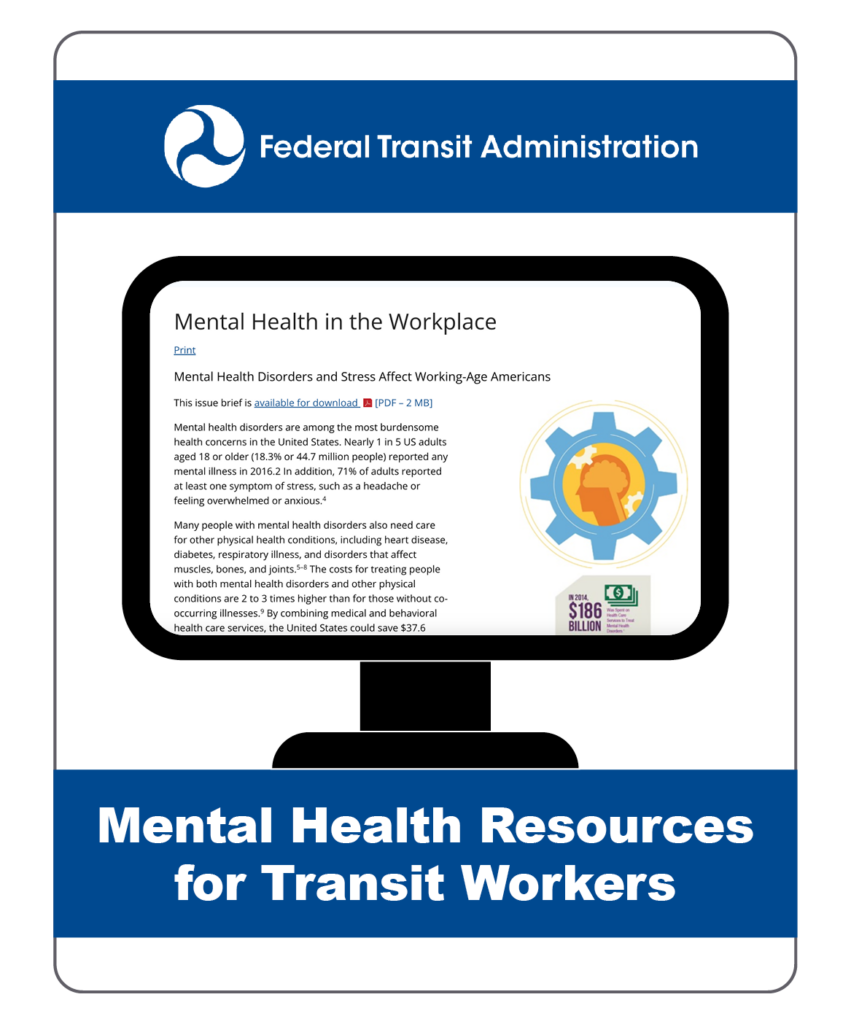
Mental Health Resources for Transit Workers
The Federal Transit Administration has aggregated the mental health resources to support transit industry workers during challenging times. Topics include suicide prevention, active shooter preparedness, mental health first aid, and more.
U.S. Department of Tranportation, Federal Transit Administration
December 2023
TOPICS: Safety and Health






 CLEAR
CLEAR
